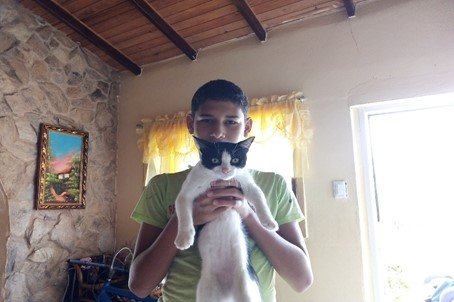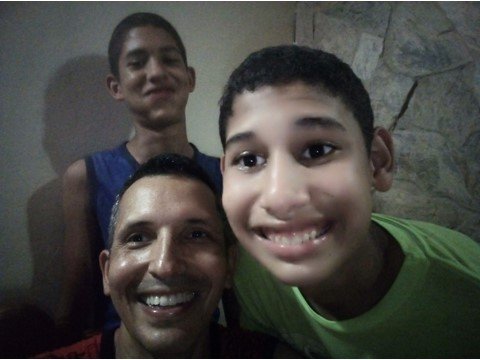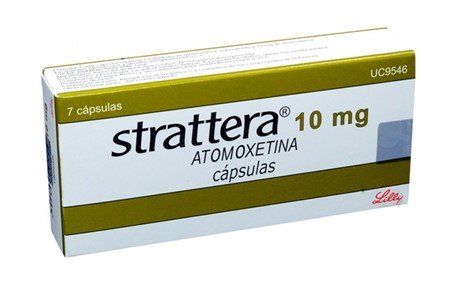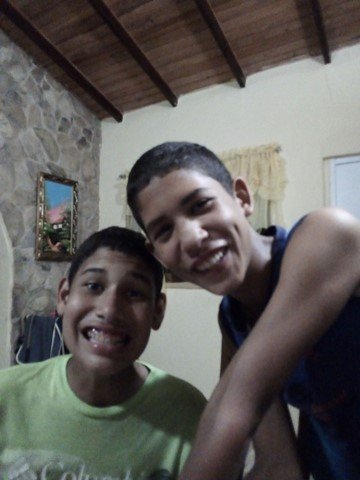Autism: Learning to live with my nephew with ASD condition (Autism Spectrum Disorder)
Friends of Steemit I am happy to be in touch with you again.
Today I want to share with you a more personal topic, related to the coexistence that I have in recent months with my nephews, specifically with the children of the eldest of my brothers.


From the current marriage of my brother I have a couple of nephews, the oldest of them will be 15 years old next December. One of the reasons why I have decided to share a little more time with my nephews is to try to help their parents a little with some family business projects; but also another reason not less important, it has to do with the autistic condition that my referred nephew has.
According to the American Academy of Pediatrics, and its body, healthychildren.org, there are 7 typologies related to learning problems; Autism spectrum disorder / Generalized developmental disorder being one of them.
María Parrado in her work entitled A different vision: Autism, defines this condition as “a disorder of brain development that begins in children before three years of age and that deteriorates their communication and social interaction, causing restricted and repetitive behavior”. This definition largely describes the behavioral traits that I have observed in my nephew during these weeks that I have been living with him, since among other elements it presents a great difficulty for verbal and written communication; and sometimes, a total absence of it.


When I talk with my sister-in-law about the condition of ASD (Autism Spectrum Disorder) my nephew presents, she told me that it was around 5 years of age when it was determined that the child had that condition. In the readings that I have made on the web, it is mentioned that one of the greatest difficulties parents face in successfully overcoming the difficulties posed by this situation is due to the inappropriate diagnosis of this condition. In that sense, M. Parrado (op cit.) Argues that “very few children suspected of autism are referred to professionals or specialized services before three years of age, having lost precious time for the implementation of a care program".
In the case of my nephew, the factor of living in a rural community further assisted with any type of diagnosis in time due to the lack of specialized public centers close to the place of residence; as well as, due to the poor conditions with which the Venezuelan State maintains these institutions and remunerates Special Education specialists. The denial of the problem by the father was also present to some extent, something that is normal and not questionable.
The trigger that served to clarify the child's condition was related to his difficulty sleeping. This situation led to his parents performing a neurological evaluation of the child, from which the medication was derived and even a feeding regimen from which the intake of gluteal foods was excluded. Subsequently, the child underwent a therapy with stem cells that fortunately allowed him to improve his sleep cycle and stop taking medication..

The most worrisome of all the medical attention that children, youth and adults with ASD may require in Venezuela, is due to the shortage of medicines and their high costs, a situation that makes them practically inaccessible for the vast majority of individuals that require it.

This coexistence with my brother's family in general, and with my nephew in particular, has also allowed me to see the degree of stress with which the family lives, product of the autistic condition of one of its members. The specialized literature on the subject recognizes this phenomenon. Elisa Rodríguez in her research work The Need to consider the family of people with Autism Spectrum Disorders, argues that “there is a need to expand the field of vision and go a little further, towards the environment of the person with ASD, and particularly towards the family as the fundamental context of every person”.
Talking to the youngest of my nephews about the responsibilities assigned to him in family life, I have noticed that he feels they have more responsibilities than his older brother. Therefore, I have been able to infer that the youngest of my nephews is unaware of the implications for having his ASD status for his brother. I believe that as a whole all family members require some kind of therapeutic help that helps them to address in a positive way the condition of the greatest of my nephews and achieve a better balance in interpersonal relationships.


By living closely with my nephew's ASD condition, the greatest interest in being able to help him develop as a more complete human being has awakened in me. It is very difficult for me to understand how complex the ASD is, I suppose that it is largely due to the fact that I am not a professional related to Education Sciences, in addition to the enigmas that still exist in relation to the subject. My nephew's future worries me greatly because I observe that he cannot make use of all the mental faculties and abilities of a young man of his age.
I don't know what grade of ASD my nephew has. I observe in him the preminence of some abilities over others. The Theory of Multiple Intelligences affirms that all human beings have 9 different types of intelligences which each, as a unique and different human being, develops in a different degree. In that sense I have observed in him a little more developed his natural and musical intelligences.

I have seen that my nephew likes to sing, sometimes he dances with some not very coordinated movements. I have recommended to his parents that my nephew start music classes, which is why I recently brought him a Spanish guitar to start the lessons of this instrument. Later I hope to bring you news about it.

I thank all of you for the attention you have given to this post, also the comments you want to share.
To conclude, I would like to point out some figures on which the author M. Parrado (2009) refers, citing official sources from Spain and the United States. For the CDC Disease Control Center about 1 in 166 people have autism; while, the Autism Society of America for 2008 was estimated that 1.5 million people had that condition in the United States, with an annual growth rate between 10 and 17% according to data from the Department of Education U.S.
Photos: R. Aldana, Agosto 2019.
Device used: Huawei Y5